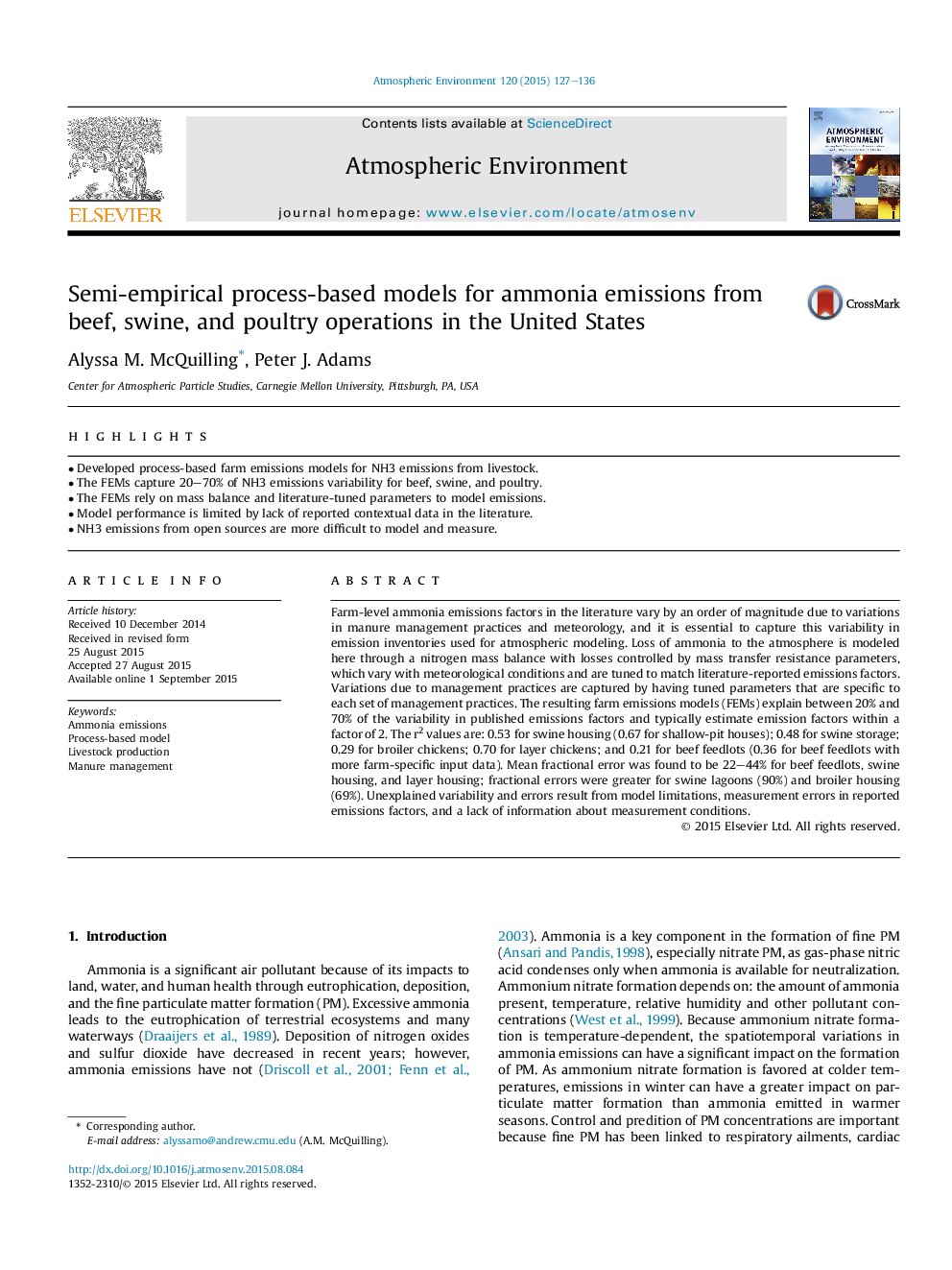| Article ID | Journal | Published Year | Pages | File Type |
|---|---|---|---|---|
| 6337310 | Atmospheric Environment | 2015 | 10 Pages |
Abstract
Farm-level ammonia emissions factors in the literature vary by an order of magnitude due to variations in manure management practices and meteorology, and it is essential to capture this variability in emission inventories used for atmospheric modeling. Loss of ammonia to the atmosphere is modeled here through a nitrogen mass balance with losses controlled by mass transfer resistance parameters, which vary with meteorological conditions and are tuned to match literature-reported emissions factors. Variations due to management practices are captured by having tuned parameters that are specific to each set of management practices. The resulting farm emissions models (FEMs) explain between 20% and 70% of the variability in published emissions factors and typically estimate emission factors within a factor of 2. The r2 values are: 0.53 for swine housing (0.67 for shallow-pit houses); 0.48 for swine storage; 0.29 for broiler chickens; 0.70 for layer chickens; and 0.21 for beef feedlots (0.36 for beef feedlots with more farm-specific input data). Mean fractional error was found to be 22-44% for beef feedlots, swine housing, and layer housing; fractional errors were greater for swine lagoons (90%) and broiler housing (69%). Unexplained variability and errors result from model limitations, measurement errors in reported emissions factors, and a lack of information about measurement conditions.
Related Topics
Physical Sciences and Engineering
Earth and Planetary Sciences
Atmospheric Science
Authors
Alyssa M. McQuilling, Peter J. Adams,
